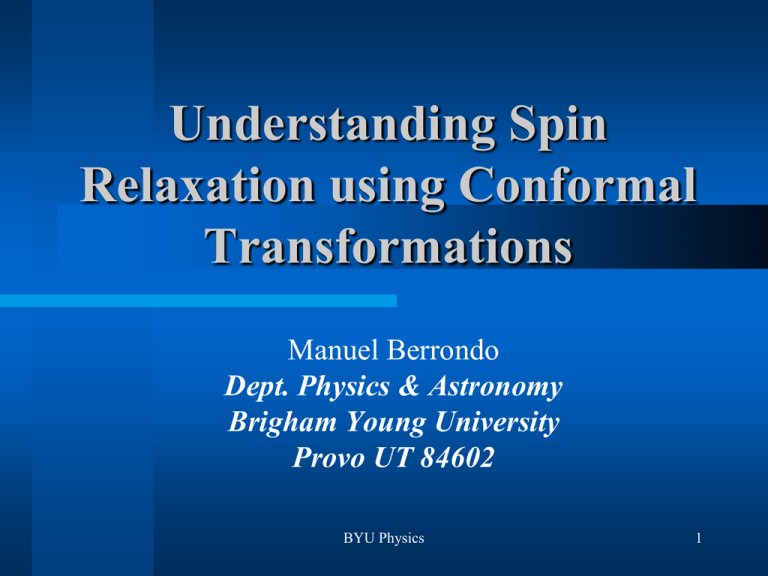Understanding Spin Relaxation using Conformal Transformations
advertisement

Understanding Spin Relaxation using Conformal Transformations Manuel Berrondo Dept. Physics & Astronomy Brigham Young University Provo UT 84602 BYU Physics 1 In collaboration with: Wes Krueger “The purpose of models is not to fit the data but to sharpen the questions” S. Karlin BYU Physics 2 Introduction Dynamics of Heisenberg model with dissipation Look first at spin precession and relaxation w/ constant B field Dissipation term (Gilbert) can be solved exactly w/stereographic projection BYU Physics 3 Spin precession and relaxation dS S B S (S B) dt preserves S2, chosen to be 1. BYU Physics 4 Conformal Transformations in 3 R Inverse of a vector a ≠ 0 a 1 aˆ a a 2 2, a a a a a a 2 a-1 0 a BYU Physics 1 2 5 Mapping plane onto sphere w r 1 1 nˆ 1 nˆ w w nˆ 2 w nˆ w nˆ 2 w nˆ 2 2 r nˆ , with inverse : w nˆ 2 2 (r nˆ ) w nˆ BYU2 Physics nˆ r nˆ r 1 2 nˆ r 6 Stereographic Projection of S on the unit sphere, S2=1 Projection onto plane has two components: W R2 Tip 2Ω S , S S nnˆ 2 1 W S S S , BYU Physics S Ω , 1 Sn 1 W2 Sn 2 1 W 7 Mixed Representation S (1 S n ) Ω From equation of motion: dS S B B (nˆ S nS) dt we get: dS n 2 B (1 S n ) dt BYU Physics 8 Equation of Motion for W (t) Ω B BΩ Ω with solution: Ω(t ) e B t t B e Ω(0), 2 Ω(t ) 2 S (t ) , S ( t ) 1 S ( t ) n 2 1 W (t ) BYU Physics 9



